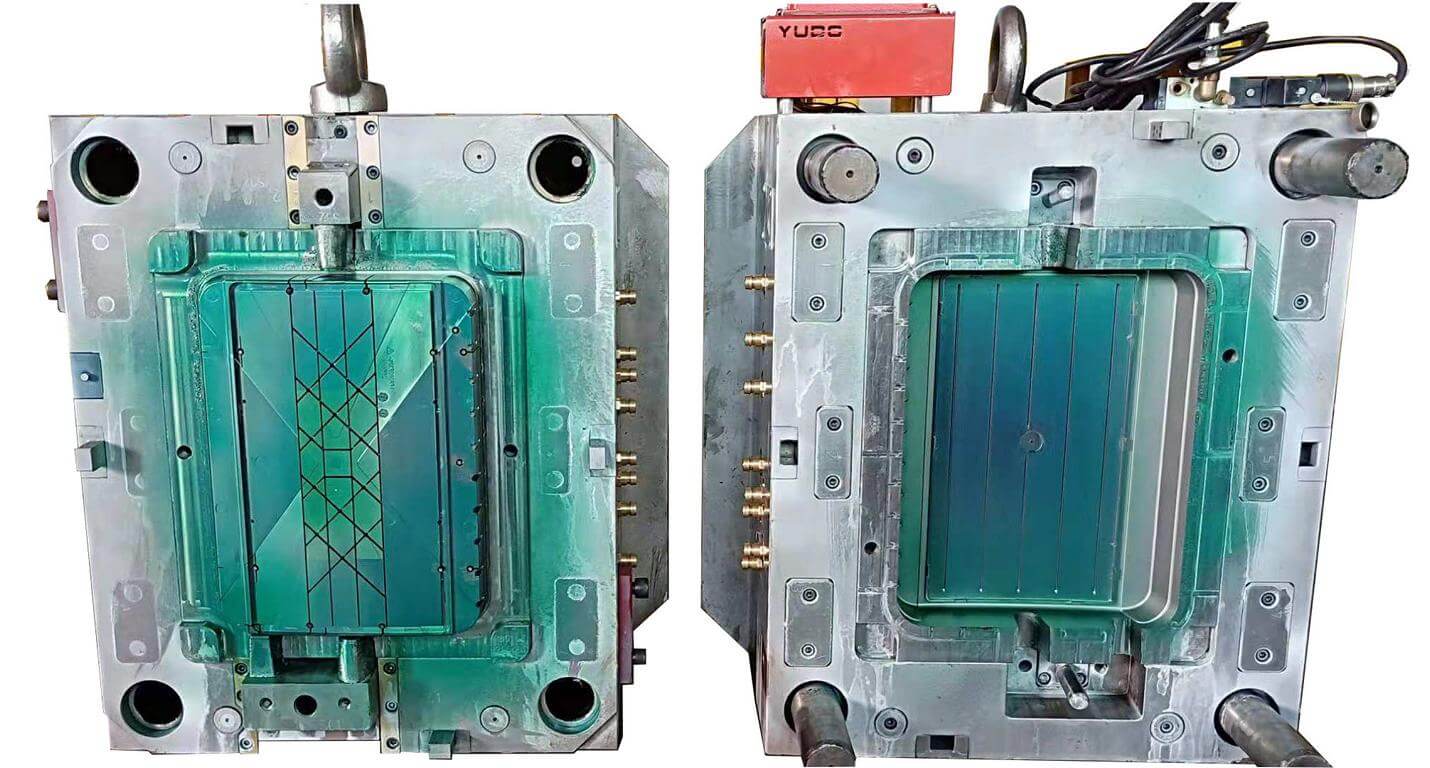Plastic injection molding is a widely used manufacturing process. In today’s world, this method has become essential for producing large-scale plastic parts. Its popularity is due to its fast, accurate, and highly efficient operation.
Plastic injection molding typically allows you to create countless plastic items. Most of these plastic parts are your daily items, from your smartphone casting to the handle on your toothbrush.
Plastic injection molding allows you to make thousands, even millions, of identical parts. Of course, these plastic parts come with tight tolerances up to 0.01mm. This level of precision creates accurate designs and products that make the product effective and look good. Injection-molded products are widely used in the car, consumer goods, and electronics industries.
Plastic injection molding involves several key stages. Each stage here is critical. In this article, we’ll dive into these stages so you can see how products go from raw plastic to ready-to-use parts. Moreover, you’ll learn about the plastic injection molding services offered in a factory. This article will be a comprehensive guide, so let’s get started.
What Is Plastic Injection Molding?
Injection molding is a prevalent manufacturing method. The term is divided into “injection” and “molding.” As the name indicates, this process entails injecting material into a mold. Plastic injection molding refers to the use of plastic.
This method shapes parts of various designs by injecting the molten material into the plastic injection mold. It is widely used to make plastic parts quickly and accurately. Once the mold is ready, you can create hundreds or millions of plastic parts. The process is highly efficient and offers consistent quality. As a result, people prefer this method to create complex shapes and precise details.
This procedure is not limited to plastic toy pieces or containers. Plastic injection molding is critical to numerous industries. Take the auto industry, for example. Almost every vehicle on the road today features injection-molded components, such as dashboards.
Electronics such as laptops, smartphones, and more depend significantly on this process. Most of their internal components, casings, and joints are injection molded.
In the medical industry, accuracy is essential, and injection molding delivers just that. The process yields precise tolerances for surgical tools, syringes, and other medical items.
Then there’s the consumer goods industry. Injection molding mostly makes our everyday items. Typical examples are kitchen utensils, plastic jars, bottles, furniture, food containers, and more.
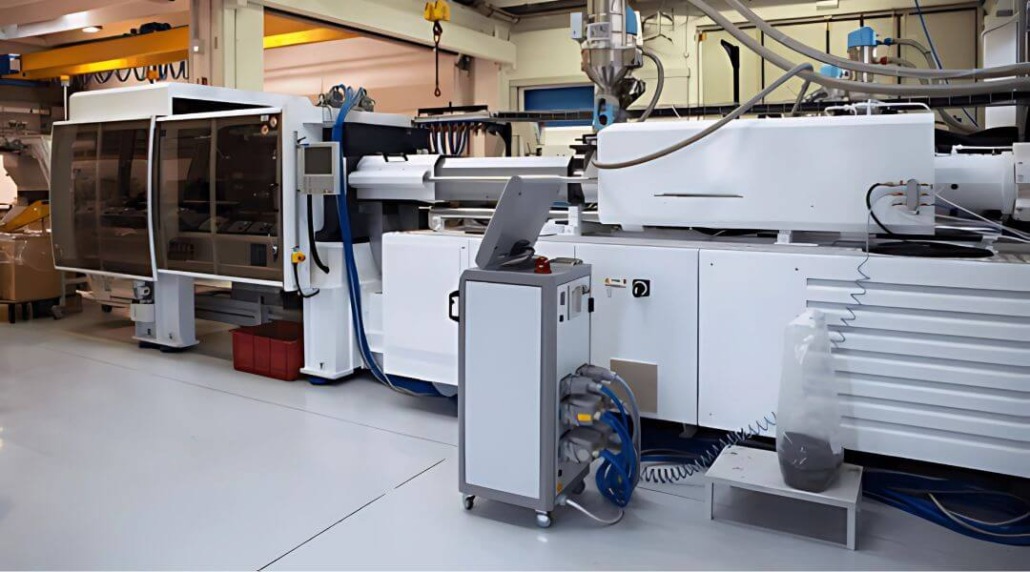
Benefits of Plastic Injection Molding Compared to Other Methods
There are various types of plastic-forming methods. Some popular ones are extrusion molding, compression molding, blow molding, and rotational molding. Now, what are the benefits you can get from the plastic injection molding method?
Precision and Complexity
One of the best things about plastic injection molding is precision and complexity. Extrusion molding or compression molding typically deals with simpler shapes. Therefore, these methods are not suitable for complex shapes.
Plastic injection molding, on the other hand, can handle more complex geometries with related mold structure. This method also allows you to work with thin walls, tight tolerances, and small and fine details. You can get the highest quality plastic products compared to any other methods.
High Production Speed
Time is valuable, especially in manufacturing. Plastic injection molding is built for speed. Once the injection mold is set up, it can produce parts rapidly, much faster than traditional or blow molding. This speed makes plastic injection molding process a go-to option for high-volume production. It’s one of the fastest methods out there.
You will be surprised to learn that plastic injection molding can make thousands of plastic parts in an hour. This method can save time and money simultaneously.
Minimal Waste
Plastic injection molding is efficient in material use. If you can make the mold correctly and precisely inject the plastic, you can minimize excess plastic—extrusion molding, where continuous material flow often leads to scraps.
In plastic injection molding, the extra plastics can be used further, reducing injection molding costs and contributing to a green environment.
Consistent Quality
Plastic injection molding also ensures uniform products. One plastic injection mold can produce millions of plastic products with the same shape and properties. It’s tough to achieve exact uniformity with compression and blow molding, but you can do it precisely with injection molding. It reduces the cost and meets the demand for high-quality products.
Versatile Material Choice
There are many types of plastics out there that are widely used in many applications. They are not all the same, and each type has its unique application. Injection molding can easily accommodate a wide range of materials. This flexibility allows you to meet a specific need. This means you can meet exact strength, durability, and flexibility properties.
Superior Finish
Injection molding creates parts with smooth surfaces and a clean finish. This method eliminates or reduces the need for post-processing. Rotational molding, on the other hand, is pretty tricky and requires extra finishing.

What is an Injection Molding Machine?
A plastic injection molding machine is a simple piece of equipment. It has several vital components that work together to produce plastic parts. In general, there are three central units in a plastic injection molding machine. Each element plays a crucial role in the plastic injection molding process.
Clamping Unit
The clamping unit holds the mold tightly in place during the injection process. It acts as a grip so the mold doesn’t slip, allowing you to change it based on the final product design.
When the machine begins, the clamping unit closes the mold halves. It uses high pressure, primarily hydraulic pressure, to prevent plastic from leaking during injection.
After the part cools, the clamping unit opens the mold to release the finished product. Without this unit, the process would be a mess.
Injection Unit
The injection unit, on the other hand, is the heart of the machine. It melts the plastic granules and injects them into the mold. The injection unit has a hopper that feeds the plastic into a heated barrel. The material is melted inside the barrel until it reaches a liquid state. Then, a screw or plunger pushes the molten plastic into the mold.
Control Unit
Note that this whole process must be appropriately controlled. Otherwise, the final product might get messy. For example, temperature control is critical in this process. You must set the temperature at the right level so that your final product doesn’t have defects. On the other hand, injection time, ejection time, and pushing force should also be adequately controlled.
What is Injection Mold?
As mentioned in the previous section, the clamping unit typically holds the injection mold. The injection mold is part of the clamping unit and shapes molten plastic into specific forms.
Injection molds are commonly made of tool steel. A variety of tool steels can be used to make injection molds. P-20 28-30 RC, S-7 pre-hardened tool steel 56 RC, H-13, and 420 are noteworthy. These tool steels are strong and durable, and the material must be strong enough to withstand millions of plastic products.
An injection mold comprises two essential parts: the cavity and the core. The cavity is the hollow space that the plastic occupies. It determines the outward form of the component. The core, on the other hand, determines the interior details. Together, they create a complete part.
You can realize the importance of a high-quality mold in making plastic injection-molded parts. The quality of the injection mold also determines the quality of the final parts. Therefore, you must first ensure the quality of the injection mold.
A well-designed mold leads to fewer defects and reduces production time and costs. Poor design may result in warping and inconsistent quality. So, seeking professional help when designing your first injection mold is wise.
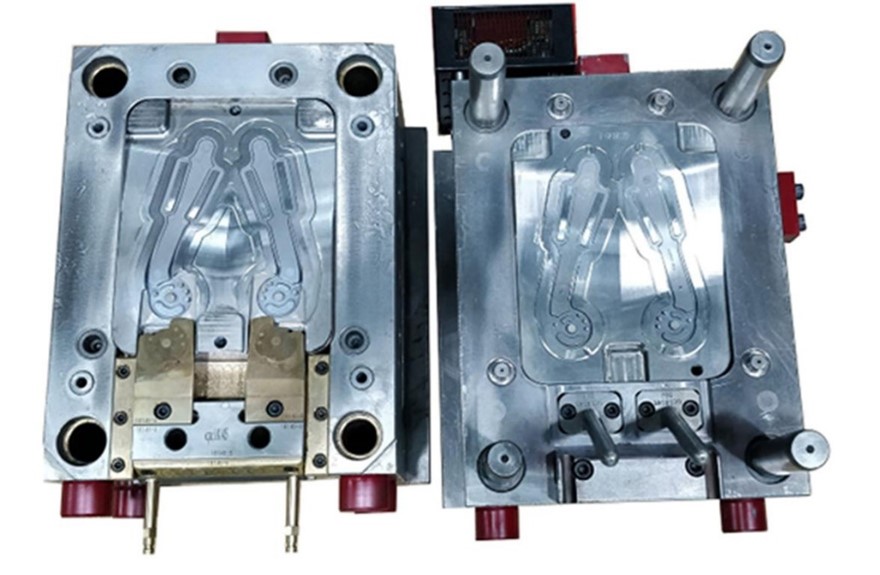
How Does Injection Molding Work?
You have already gone through a comprehensive study of injection molding. You are also familiar with the various components of an injection molding machine. In this section, you will learn how injection molding works.
Clamping
The first step in the injection molding process is clamping. Here, the two halves of the mold are brought together. This is the crucial stage. If the mold isn’t clamped tightly, molten plastic can escape, which may create defects in your final parts.
The clamping unit holds the mold halves together with significant force. The force or pressure must be strong enough to withstand the pressure of the injected material. If it’s too weak, the mold will open during injection, causing a mess. Too much force can damage the mold.
So, how do you determine the correct clamping force? Consider aspects such as the part’s size and the plastic utilized. For example, bigger pieces need more force. The goal is to get a tight fit without overdoing it. Once the mold is firmly closed, we proceed to the next step.
Injection
The plastic material is fed into the injection molding machine at this stage. The raw plastic, usually in pellet form, is heated until it melts into a thick, gooey substance.
It is pouring syrup into a mold. The molten plastic is poured into the mold cavity under high pressure, ensuring that it fills every nook and corner. If the pressure is too low, the mold cannot fill. It is important to note that improper pressure might result in weak or incomplete portions.
Speed is also critical during injection. The faster the material is injected, the less time it has to cool before filling the mold. But there’s a problem. Doing it quickly can create turbulence, the main cause of a few defects. Therefore, you must carefully balance speed and pressure.
Dwelling
The dwelling phase is also critical in the plastic injection molding method. As you know, you must maintain appropriate pressure while filling the mold. When the plastic is injected, it doesn’t always fill the mold evenly. There might be air pockets or gaps. To avoid this issue, you must hold the pressure steady. This way, you can ensure no trapped air inside. This is where the dwelling phase comes in.
The dwelling time can vary depending on the material and part design. Too short a dwelling time can lead to incomplete parts, while too long can waste time and energy.
Cooling
Once the dwelling phase is complete, it’s time for cooling. This is where the real transformation happens. The molten plastic begins to solidify as it cools. The cooling stage must be maintained properly to set the shape of the part.
This stage usually takes longer than the dwelling stage. In this case, the mold’s temperature generally plays the leading role. You could use an air or water cooling system. Warping might happen if the mold is too cold, so be careful!

Mold Opening and Removal of Products
After cooling, it’s time to release the final part. Usually, the ejector pin does this. The clamping unit releases the pressure, generally allowing the two halves to separate. If you do it incorrectly, it can damage the mold or the finished part.
Once the mold is open, you can remove it using tools or hand. Once removed, the part is inspected again. It might undergo further processing, such as trimming or surface finishing.
Plastic Injection Molding Materials
One of the best benefits of plastic injection molding is its versatility. You can generally work with various plastic injection molding materials in injection molding manufacturing. Selecting the suitable material from this diverse list depends on your project needs. Remember, each material here has its unique strengths and weaknesses. Do you need flexibility? Go for PE or PP. Want Toughness? Try ABS or PC.
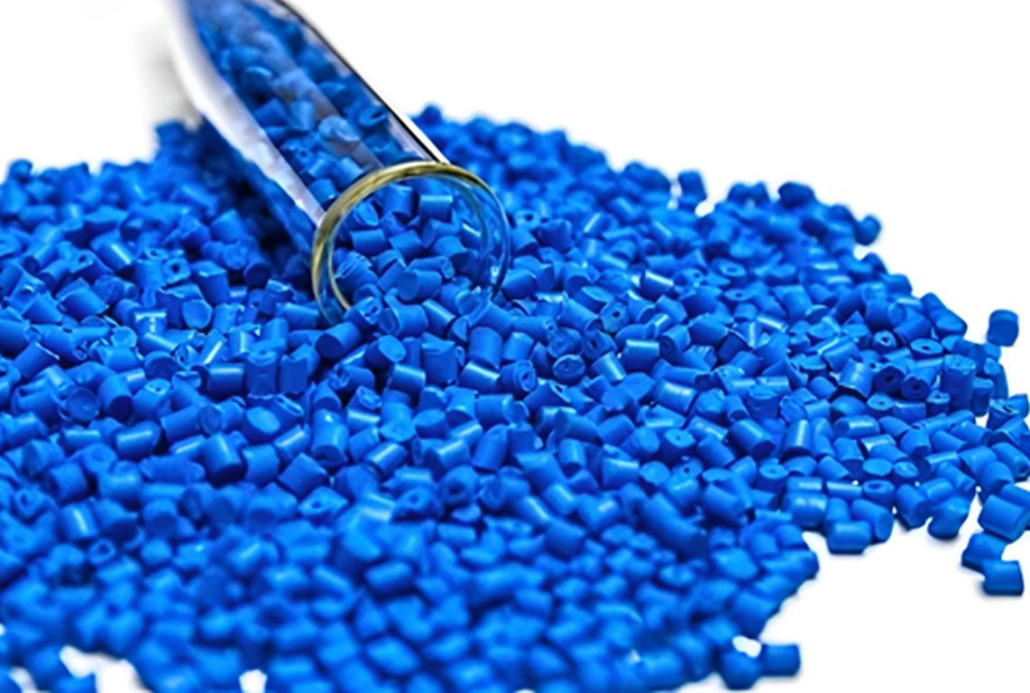
Polyethylene (PE)
This plastic is incredibly lightweight and flexible. It is also very resistant to chemicals and moisture, making it a popular choice for containers and bottles.
Polyethylene is one of the most widely used plastics globally due to its incredibly lightweight, flexible and cost-effectiveness. It is also very resistant to chemicals and moisture, making it a popular choice for containers and bottles.
There are various type of PE materials, including Low-Density Polyethylene (LDPE), High-Density Polyethylene (HDPE), and Ultra-High Molecular Weight Polyethylene (UHMWPE), each one uses to different applications but very similar.
Properties: Lightweight, flexible, moisture-resistant, and resistant to many chemicals. PE is relatively soft but has good impact resistance. It can handle low temperatures but has limited resistance to high temperatures.
Types of PE materials:
- LDPE: Known for its flexibility, commonly used in film applications like plastic bags.
- HDPE: Stronger and more rigid, used in items like milk jugs, detergent bottles, and pipes.
- UHMWPE: Extremely tough with excellent wear resistance, often used in industrial applications, such as conveyor belts and bulletproof vests.
Applications: Due to its variety, PE is used across industries for containers, piping, and even high-wear applications. In the food industry, it’s ideal for food containers, food packaging due to its moisture resistance. Go to PE injection modling and HDPE injection molding page to know more about this PE material.
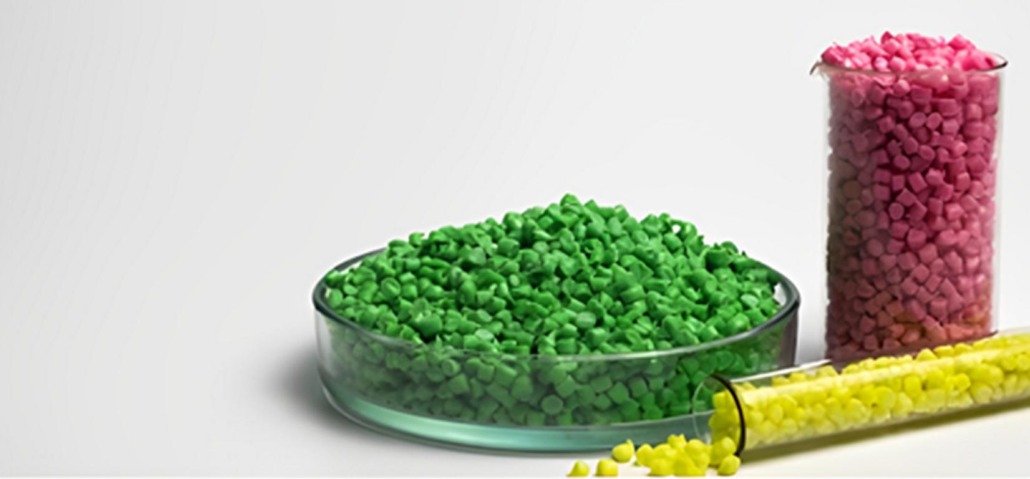
Polypropylene (PP)
Polypropylene is another popular choice. It is prevalent for being strong and very resistant to fatigue, it provides excellent temperature resistance.It’s available in homopolymer and copolymer forms, with each variation suitable for specific applications.
Properties: Strong, durable, fatigue-resistant, and excellent temperature resistance. PP can endure repetitive bending, making it suitable for applications like living hinges.
Advantages: PP offers high chemical resistance and is lightweight, yet stronger than PE. It’s also resistant to absorbing moisture, making it ideal for long-lasting products.
Applications:
- Automotive: Frequently used in automotive parts like bumpers, dashboards, and battery cases.
- Consumer Goods: Found in reusable containers, furniture, textiles, and packaging. Its fatigue resistance makes it useful for hinges in household products and storage containers.
- Medical: Sterilizable and resistant to bacteria, PP plastic material is also common in medical syringes and vials. Go to polypropylene injection molding page to know more.

Acrylonitrile Butadiene Styrene (ABS)
ABS is a plastic used for injection molding. It is known for its toughness, making it great for parts that need to endure impact. It has a glossy finish, so it’s often used in electronics and toys. ABS might be your best bet if you want something that looks good and lasts.
Properties: ABS is tough, impact-resistant, and lightweight with a glossy finish. It’s also relatively affordable, combining strength and visual appeal.
Advantages: Known for excellent impact resistance, making it ideal for products that must withstand rough handling. ABS is also highly machinable and easy to paint, providing aesthetic and functional versatility.
Applications of ABS plastic products:
Electronics: Used for casings, keyboards, and monitor housings due to its aesthetic finish and durability.
Automotive: Instrument panels, wheel covers, and mirror housings.
Toys and Consumer Products: Especially popular for toys (such as building blocks) that require durability and a pleasing appearance. Go to ABS injection molding and what is ABS material page to know more about this material.
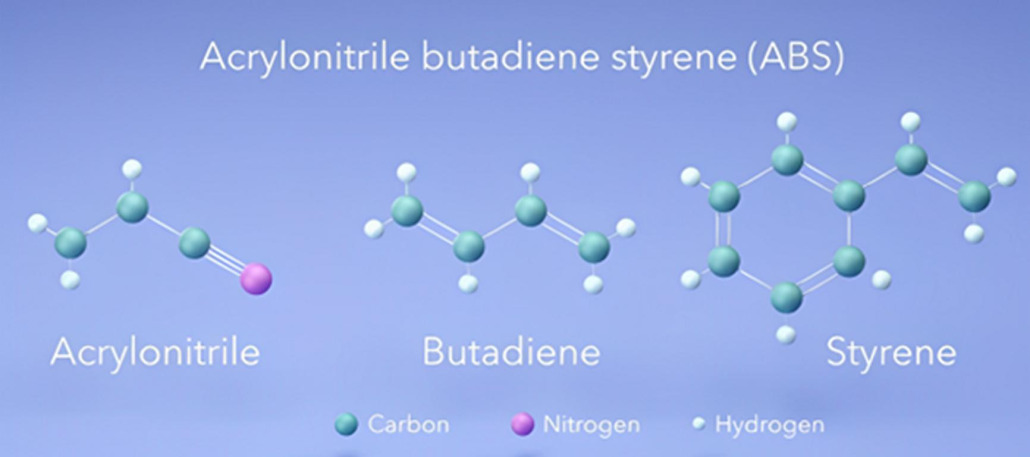
Polycarbonate (PC)
This plastic material is relatively heavier than other plastics. This material could be your best choice when you need a durable solution. It is virtually unbreakable and highly transparent. This material is used in safety glasses and light fixtures. It’s a strong option when transparency and resilience are needed.
Properties: Polycarbonate is heavier than most plastics but is virtually unbreakable and highly transparent. It can withstand high impact and heat, making it suitable for safety applications.
Advantages: It’s one of the strongest transparent plastics available, with excellent heat resistance. It’s also easily molded, allowing for intricate designs in parts and components.
Applications:
Safety Equipment: Used for safety glasses, helmets, and shields due to its shatter-resistant quality.
Optical Media: Common in lenses and DVDs because of its clarity.
Construction and Lighting: Used in skylights, lighting fixtures, and bulletproof glass for durability and transparency. Go to polycarbonate injection molding and Polycarbonate vs Acrylic pages to know more about this PC plastic material.
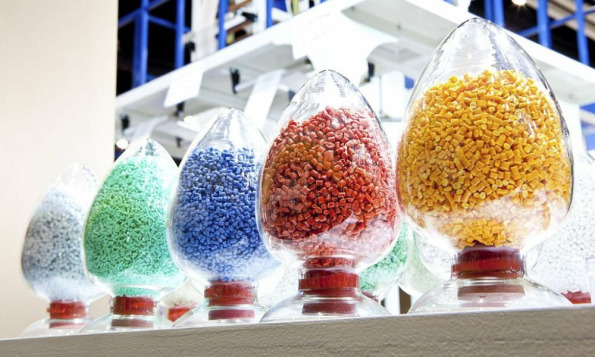
Nylon (PA)
Nylon is a plastic material with excellent strength and flexibility. It is also very resistance to wear and abrasion. Available in different grades (Nylon 6, Nylon 6/6, etc.), each with specific properties, it is widely used in industrial applications requiring toughness. It can also handle high temperatures.
Properties: Excellent strength, flexibility, abrasion resistance, and wear resistance. Nylon can withstand high temperatures and provides good chemical resistance.
Advantages: Nylon’s high durability and heat resistance make it a top choice for mechanical parts, while its low friction makes it suitable for gears and bearings.
Applications:
Mechanical Components: Often used in gears, bearings, bushings, and other wear-prone parts due to its strength and durability.
Textiles: Common in fabrics due to its strength and resilience, often used in outdoor gear and apparel.
Automotive: Used in engine components, fuel tanks, and under-the-hood parts due to its heat resistance. Go to nylon injection molding page to know more.
Every single plastic provides specific advantages that make it ideal for particular applications. Selection depends on factors like strength requirements, environmental conditions, aesthetic preferences, and manufacturing costs. This guide helps in understanding which plastic might be best suited for various product requirements across different industries, from consumer goods to industrial components.

Plastic Injection Molding services
A typical plastic injection molding factory can offer you unique services. Each of these services might benefit you in your business. This section will familiarize you with a few plastic injection molding services.
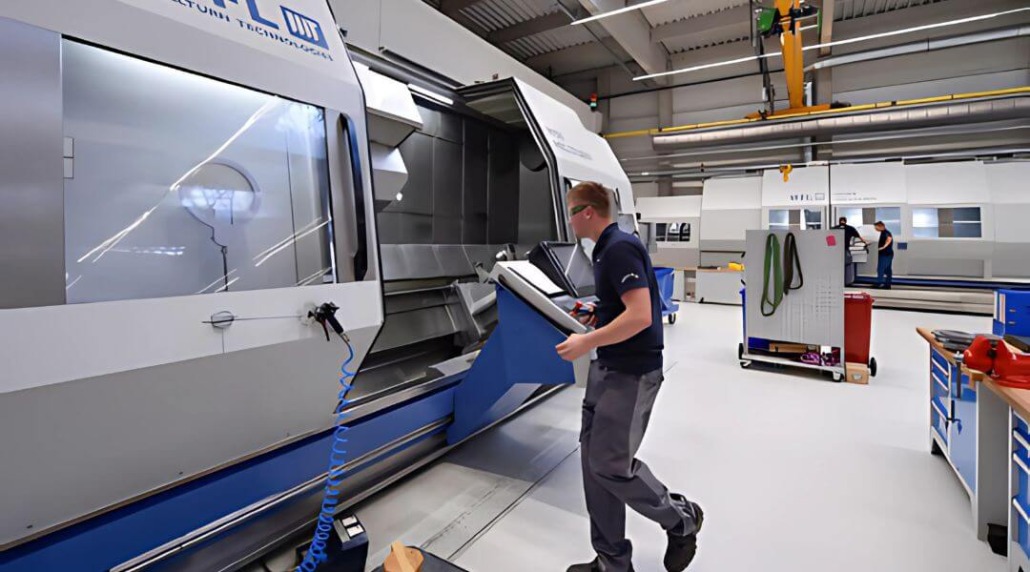
Service #1 Design and Engineering Support
Designing and engineering support are crucial parts of mold and product design. A perfect injection mold can ensure effective injection and the highest quality of the products. Every mold manufacturing company specializes in this to meet specific customer demands. The engineering team collaborates with clients to optimize part designs.
This way, they can ensure good manufacturability and the efficiency of the whole process. They also evaluate the initial design and suggest changes to save time and reduce costs.
DFM is a term used to manufacture plastic injection molds. Design for manufacturability focuses on how easy or difficult a design is to manufacture. It helps identify potential issues early in the process. By implementing DFM principles, designers can reduce production hiccups. You will know this when you deal with the actual injection mold design process.
Service #2 Custom Mold Making
Custom mold making is another primary service of an injection molding company. To launch new plastic products, you must start by creating a custom plastic injection mold.
The mold-making process starts with the design and engineering steps. What shape do you need? How thick should the walls be? These questions guide the mold design steps.
Several other factors also play a crucial role here. First is the material choice. As mentioned already, injection molds are typically made of high-quality tool steels. When making the molds, tolerance is the most critical parameter. Therefore, the manufacturing method must be wisely chosen.
The two most popular injection mold-making methods are CNC machining and casting. CNC machining can be of various types. Based on your design, the CNC method varies. Sometimes, you may need multiple CNC machining methods. For instance, CNC milling creates grooves, holes, and inner shapes. Other CNC methods include CNC turning, boring, drilling, and more.
Metal casting is another method of making injection mold cavity or core, this is specially used in plastic doll toys related products. It is pretty complex and requires careful consideration to make any type of plastic injection molds. CNC machining and EDM (electric discharge machining) are two popular manufacturing process of creating plastic injection molds.
Service #3 Custom Plastic Parts
You might not have the facility to install custom molds. On the other hand, making such facilities might need high costs. Because of this, most injection molding manufacturers also offer to make various custom plastic parts. This way, you can save a lot of investment costs and make money faster, you only need to buy the injectino molds and send your molds to your plastic injection molding supplier, they will make all of custom palstic products base on your customized injection mold.
This process also starts with a clear design. Once the mold is ready, plastic is injected at high pressure into the mold. As the plastic cools and solidifies, the part takes shape. You already know the benefits and detailed manufacturing process.
Service #4 Quality Control and Testing
A plastic injection molding company offers testing and quality control services in addition to the above three services.
Quality control is crucial in injection molding. It’s the safety net that catches upcoming issues when they happen. Various quality control processes might be needed depending on the mold and its products.
Dimensional checks are one of the first lines of testing. This process measures parts against specified tolerances. Are they the right size? Do they fit together as they should? If not, the engineers make necessary adjustments before mass production. Strength testing is the next testing method. This testing method ensures that parts can withstand their intended use. Besides, there are other tests like surface finishing, pressure testing, spur testing, defects testing, and many more.
Frequently Asked Question
How Much Does Injection Molding Cost?
The cost of injection molding generally varies based on design and size—the average ranges from $1000 to $5000. If you need larger molds, the cost might be higher. The cost of injection-molded plastic parts, on the other hand, depends on the type of material. PC plastic is generally more expensive than PVC or ABS.
What Is The Problem With The Injection Molding Process?
Every process has its hiccups, and injection molding is no exception. Common problems include warping, which occurs when the part cools unevenly.
Flash is another problem with the injection molding process. It is the excess material that seeps out of the mold. Have you seen unwanted edges on your plastic parts? If yes, then it’s a sign of flash. In contrast, shorts happen when the mold doesn’t fill completely.
How Long Does It Take to Make A Plastic Mold?
The time it takes to create a plastic mold can range from a few weeks to several months. The specific time is not fixed. It all depends on the complexity and the specifics of your project.
How Do I Add Texture to The Mold?
Adding texture to a mold can improve your product’s look. It’s all about aesthetics and function. There are several methods to do it. One of the popular ways is etching, which creates patterns on the mold’s surface before it’s used. Another option is laser engraving.

Final Words
Plastic injection molding is one of the most popular plastic manufacturing processes. It is an efficient way to make complex, high-precision plastic parts. Throughout this article, we talked about this process, especially plastic injection molding.
We are among the top 10 plastic injection molding companies in China, specializing in plastic injection mold and injection molding manufacturing, and we export plastic parts from China to various contries of the world. Over 40 happy customers have provided us with the best quality, and they are fully satisfied by our quality and service. You are welcome if you need our support. We sincerely hope we could service you in the near future, and you will be surely happy as well as our other happy customers.
The production of thermoplastic plastic products involves a variety of commercial methods. Each has its own specific design requirements as well as limitations. Usually, part design, size, and shape clearly determine the best process. Occasionally, the part concept lends itself to more than one process. Because product development differs depending upon the process, your design team must decide which process to pursue early in product development.
This section briefly explains the common processes used for thermoplastics from Bayer Corporation. Today, many companies purchase injection-molded parts from injection molding companies in China. If you need injection molded parts for your business, you need to really think about this.
The above-described injection molding process uses an injection molding machine to manufacture plastic products. There are two main parts to the machines: the injection unit and the clamping unit. Please visit our injection molding section for further information.
Are you in need of injection molding, or are you seeking a China-based injection mold partner to create plastic molds and manufacture your plastic molded parts? Send us an email, and we will reply to you within two working days.



